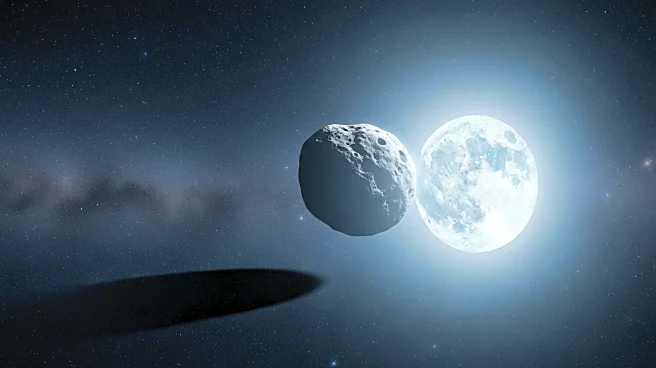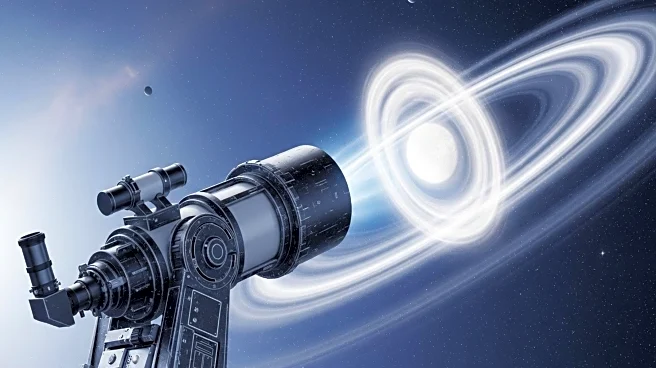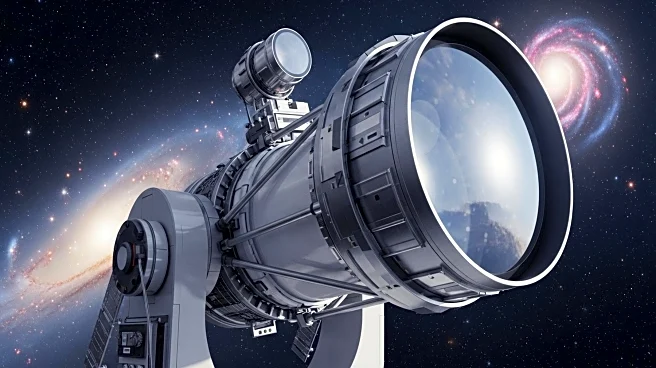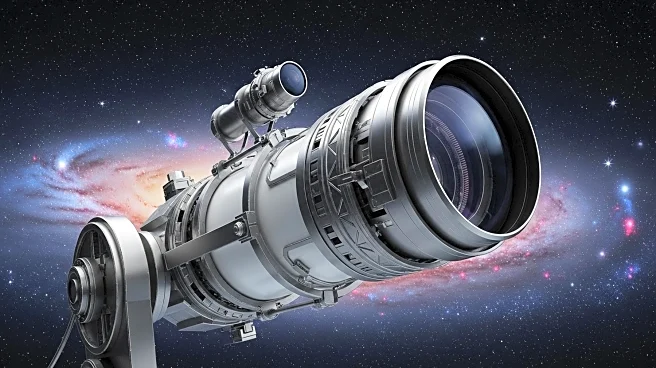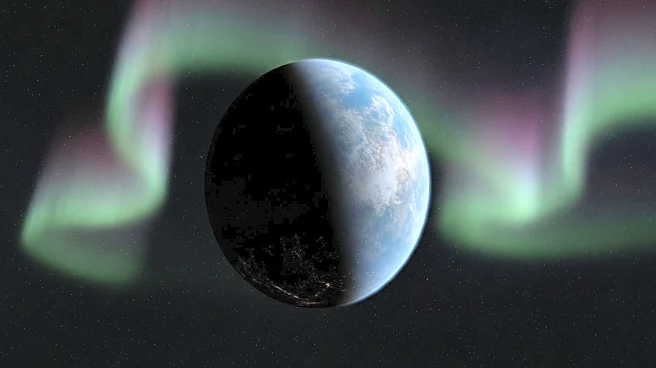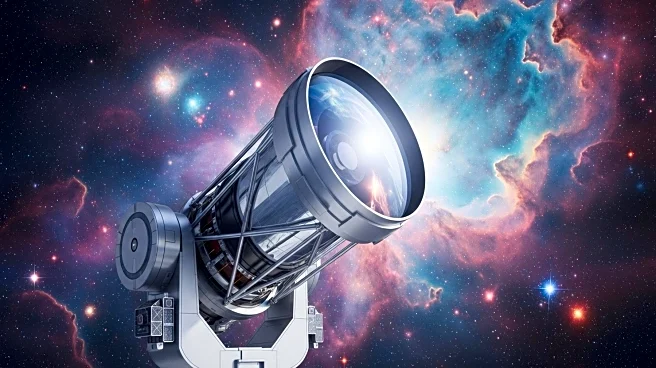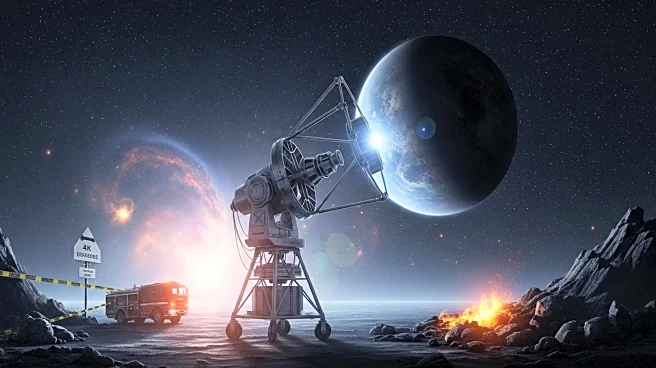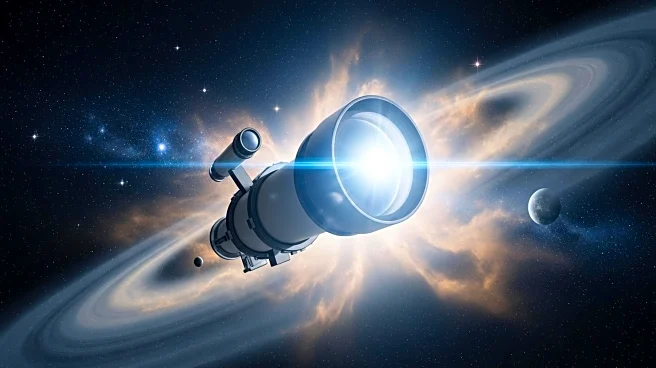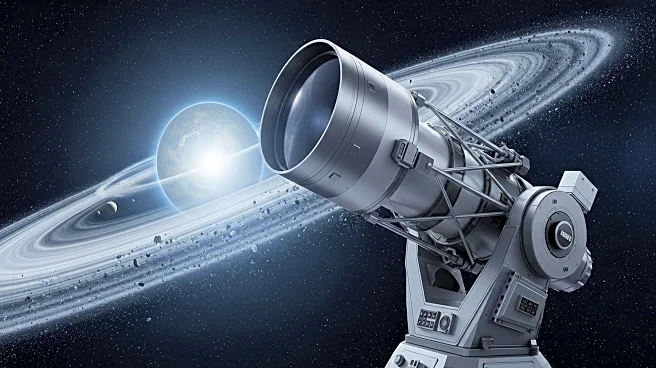What's Happening?
Astrophysicists from the University of Bristol, using NASA's James Webb Space Telescope (JWST), have detected potential signs of an atmosphere on the exoplanet TRAPPIST-1e. Located 40 light-years away, this Earth-sized planet is within the habitable zone of its star, TRAPPIST-1. The JWST's NIRSpec instrument was used to analyze starlight passing through the planet's atmosphere, revealing possible atmospheric components. Initial findings suggest the absence of a primordial hydrogen-based atmosphere, but the presence of a secondary atmosphere remains a possibility. This discovery is part of a larger international project aimed at understanding the atmospheric and surface conditions of TRAPPIST-1e.
Why It's Important?
The potential discovery of an atmosphere on TRAPPIST-1e is a significant step in the search for habitable worlds beyond our solar system. If confirmed, the presence of an atmosphere could indicate conditions suitable for liquid water, a key ingredient for life. This research enhances our understanding of exoplanetary atmospheres and their evolution, providing insights into the potential for life elsewhere in the universe. The findings also highlight the capabilities of the JWST in advancing exoplanetary science, offering a new perspective on the diversity and complexity of planetary systems.
What's Next?
Further observations and analyses are planned to confirm the presence of an atmosphere on TRAPPIST-1e. Researchers will compare data from other planets in the TRAPPIST-1 system to refine their understanding of atmospheric conditions. These efforts will involve additional transits and the use of JWST's advanced instruments to gather more detailed information. The ongoing research will contribute to the broader goal of identifying potentially habitable exoplanets and understanding the factors that influence their atmospheres.


